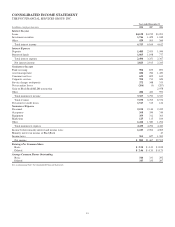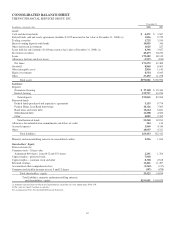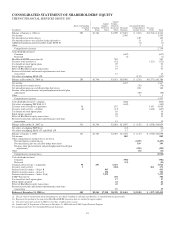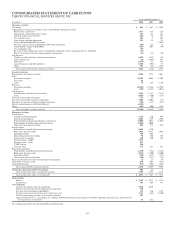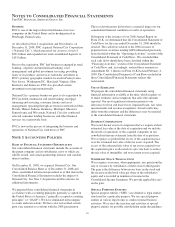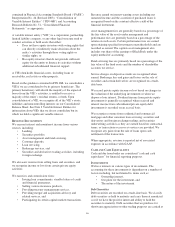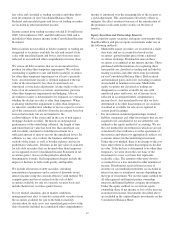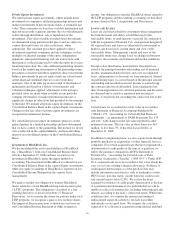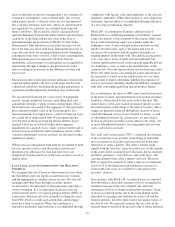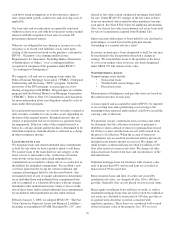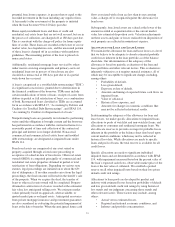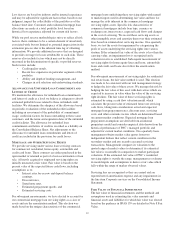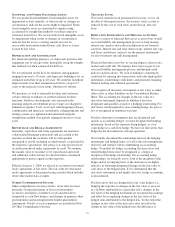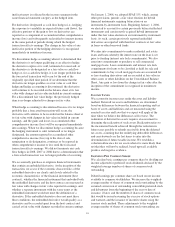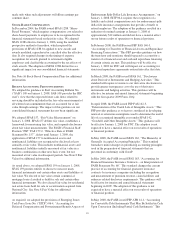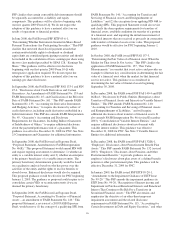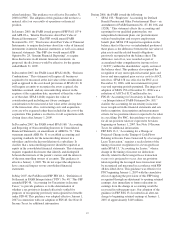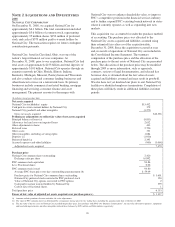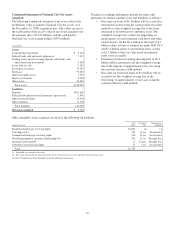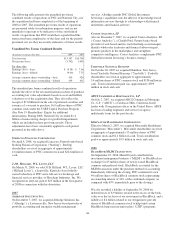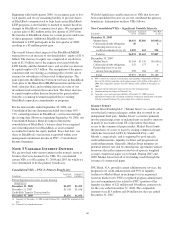PNC Bank 2008 Annual Report Download - page 95
Download and view the complete annual report
Please find page 95 of the 2008 PNC Bank annual report below. You can navigate through the pages in the report by either clicking on the pages listed below, or by using the keyword search tool below to find specific information within the annual report.potential foreclosure expenses, is greater than or equal to the
recorded investment in the loan including any superior liens.
A fair market value assessment of the property is initiated
when the loan becomes 90 to 120 days past due.
Home equity installment loans and lines of credit and
residential real estate loans that are not well secured, but are in
the process of collection, are charged-off at 180 days past due.
This is consistent with the charge-off policy for home equity
lines of credit. These loans are recorded at the lower of cost or
market value, less liquidation costs, and the unsecured portion
of these loans is charged off in accordance with regulatory
guidelines. The remaining portion of the loan is placed on
nonaccrual status.
Additionally, residential mortgage loans serviced by others
under master servicing arrangements and primary-serviced
residential loans not in process of foreclosure are also
classified as nonaccrual at 180 days past due or if a partial
write-down has occurred.
A loan is categorized as a troubled debt restructuring (“TDR”)
if a significant concession is granted due to deterioration in
the financial condition of the borrower. TDRs may include
certain modifications of terms of loans, receipts of assets from
debtors in partial or full satisfaction of loans, or a combination
of both. Restructured loans classified as TDRs are accounted
for in accordance with SFAS 15, “Accounting by Debtors and
Creditors for Troubled Debt Restructurings”, and SFAS 114,
“Accounting by Creditors for Impairment of a Loan.”
Nonperforming loans are generally not returned to performing
status until the obligation is brought current and the borrower
has performed in accordance with the contractual terms for a
reasonable period of time and collection of the contractual
principal and interest is no longer doubtful. Nonaccrual
commercial and commercial real estate loans and troubled
debt restructurings are designated as impaired loans under
SFAS 114.
Foreclosed assets are comprised of any asset seized or
property acquired through a foreclosure proceeding or
acceptance of a deed-in-lieu of foreclosure. Other real estate
owned (OREO) is comprised principally of commercial and
residential real estate properties obtained in partial or total
satisfaction of loan obligations. Depending on various state
statutes, legal proceedings are initiated on or about the 65th
day of delinquency. If no other remedies arise from the legal
proceedings, the final outcome will result in the sheriff’s sale
of the property. When we acquire the deed, the transfer of
loans to other real estate owned will be completed. Property
obtained in satisfaction of a loan is recorded at the estimated
fair value less anticipated selling costs. We estimate market
values primarily based on appraisals, when available, or
quoted market prices on liquid assets. Anticipated recoveries
from private mortgage insurance and government guarantees
are also considered in evaluating the potential impairment of
loans at the date of transfer. When the anticipated future cash
flows associated with a loan are less than its net carrying
value, a charge-off is recognized against the allowance for
loan losses.
Subsequently, foreclosed assets are valued at the lower of the
amount recorded at acquisition date or the current market
value less estimated disposition costs. Valuation adjustments
on these assets and gains or losses realized from disposition of
such property are reflected in noninterest expense.
A
LLOWANCE FOR
L
OAN AND
L
EASE
L
OSSES
We maintain the allowance for loan and lease losses at a level
that we believe to be adequate to absorb estimated probable
credit losses inherent in the loan portfolio as of the balance
sheet date. Our determination of the adequacy of the
allowance is based on periodic evaluations of the loan and
lease portfolios and other relevant factors. This evaluation is
inherently subjective as it requires material estimates, all of
which may be susceptible to significant change, including,
among others:
• Probability of default,
• Loss given default,
• Exposure at date of default,
• Amounts and timing of expected future cash flows on
impaired loans,
• Value of collateral,
• Historical loss exposure, and
• Amounts for changes in economic conditions that
may not be reflected in historical results.
In determining the adequacy of the allowance for loan and
lease losses, we make specific allocations to impaired loans,
allocations to pools of watchlist and non-watchlist loans, and
allocations to consumer and residential mortgage loans. We
also allocate reserves to provide coverage for probable losses
inherent in the portfolio at the balance sheet date based upon
current market conditions, which may not be reflected in
historical loss data. While allocations are made to specific
loans and pools of loans, the total reserve is available for all
credit losses.
Specific allocations are made to significant individual
impaired loans and are determined in accordance with SFAS
114, with impairment measured based on the present value of
the loan’s expected cash flows, observable market price of the
loan or the fair value of collateral. We establish a pooled
reserve on all other impaired loans based on their loss given
default credit risk ratings.
Allocations to loan pools are developed by product and
industry with estimated losses based on probability of default
and loss given default credit risk ratings by using historical
loss trends and our judgment concerning those trends and
other relevant factors. These factors may include, among
others:
• Actual versus estimated losses,
• Regional and national economic conditions, and
• Industry and portfolio concentrations.
91


